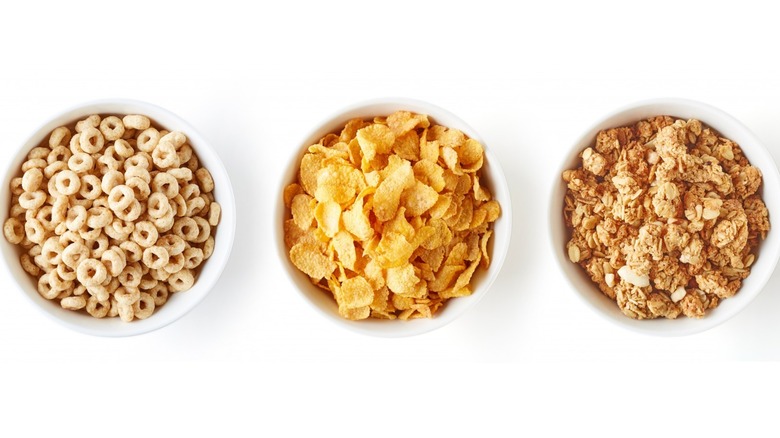What You Need To Know About Potential 2022 Cereal Shortages
Cereal was not exempt from the shortages that played out throughout 2021. However, things may improve in 2022.
In the February report on Cereal Supply and Demand, the Food and Agriculture Organization of the United Nations (FAO) noted that the production of cereal, as well as the item's utilization and trade, would continue to increase through 2022. At the same time, the ending stocks, that is, the goods left over, should continue the downward trajectory they've been on seen since the pandemic began.
What the data effectively means is that the industry will follow its pattern of growth while navigating the surge of popularity that occurred when people began to eat more at home. As Food Business News learned in October 2020, the product had a special appeal for Americans who wanted to impose order on the chaos around them. The surge in consumption was cited by CNN as the reason why Grape-Nuts experienced a shortage in early 2021.
However, Information Resources, Inc., a research company based out of Chicago, revealed, via Arkansas Democrat Gazette, that after that initial surge, sales dropped by 4.4% as people began leaving their houses again. Some remained optimistic. "People will work at home more than they have before, once this pandemic hopefully ends," Jeff Harmening, the chief executive of General Mills, said. "Which is more people eating at home, which is great for us." Still, with the diminished levels of consumption, the industry will feel one less pressure on their supply. So, shortages will become more rare.
Disruptions can still happen
What the report on Cereal Supply and Demand shows, via FAO, is that we can expect shortages more from individual issues that exacerbate the supply chain, not a sudden vanishing of products.
This echoes what Steve Cahillane, CEO of Kellogg's, told analysts in a conference call covered by Bakery and Snacks in August. COVID had disrupted the production schedule of some plants, but his main focus was on the various bottlenecks that constricted the supply chain. If some ingredient gets delayed, the whole production process stagnates."That will get sorted," he said. "It just takes a while to move. [Kellogg's is doing its] best to forecast these disruptions and this type of slowed activity relative to a non-pandemic world."
They probably did not, however, expect the disruption caused by the Kellogg's strike in October. As CNN reported, 1,400 workers protested after negotiations of a new contract between management and the union fell through. Bloomberg noticed that the sudden shortage of work in the American plants caused Kellogg's to begin importing their own products from abroad to stop any shortages from happening. While NPR confirmed that an agreement had been reached in December, it showed that the industry was still vulnerable to shortages. But with the union appeased, fewer people buying cereal, and cereal production still increasing, one could reasonably expect cereal to not suffer a major shortage this year.

